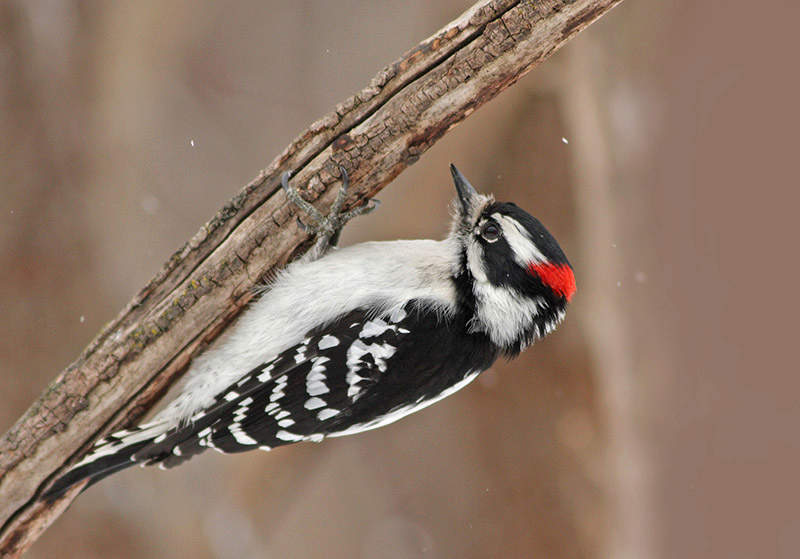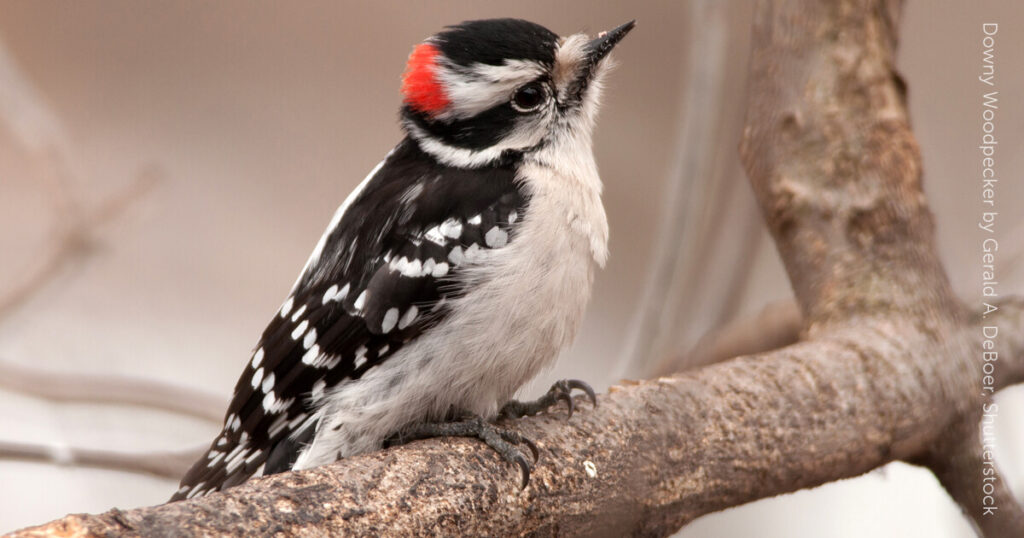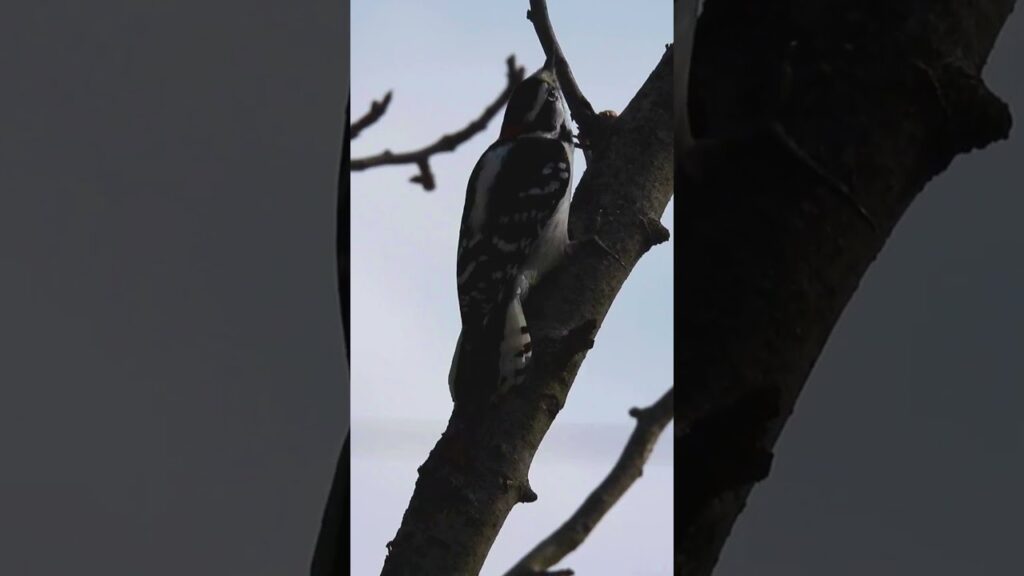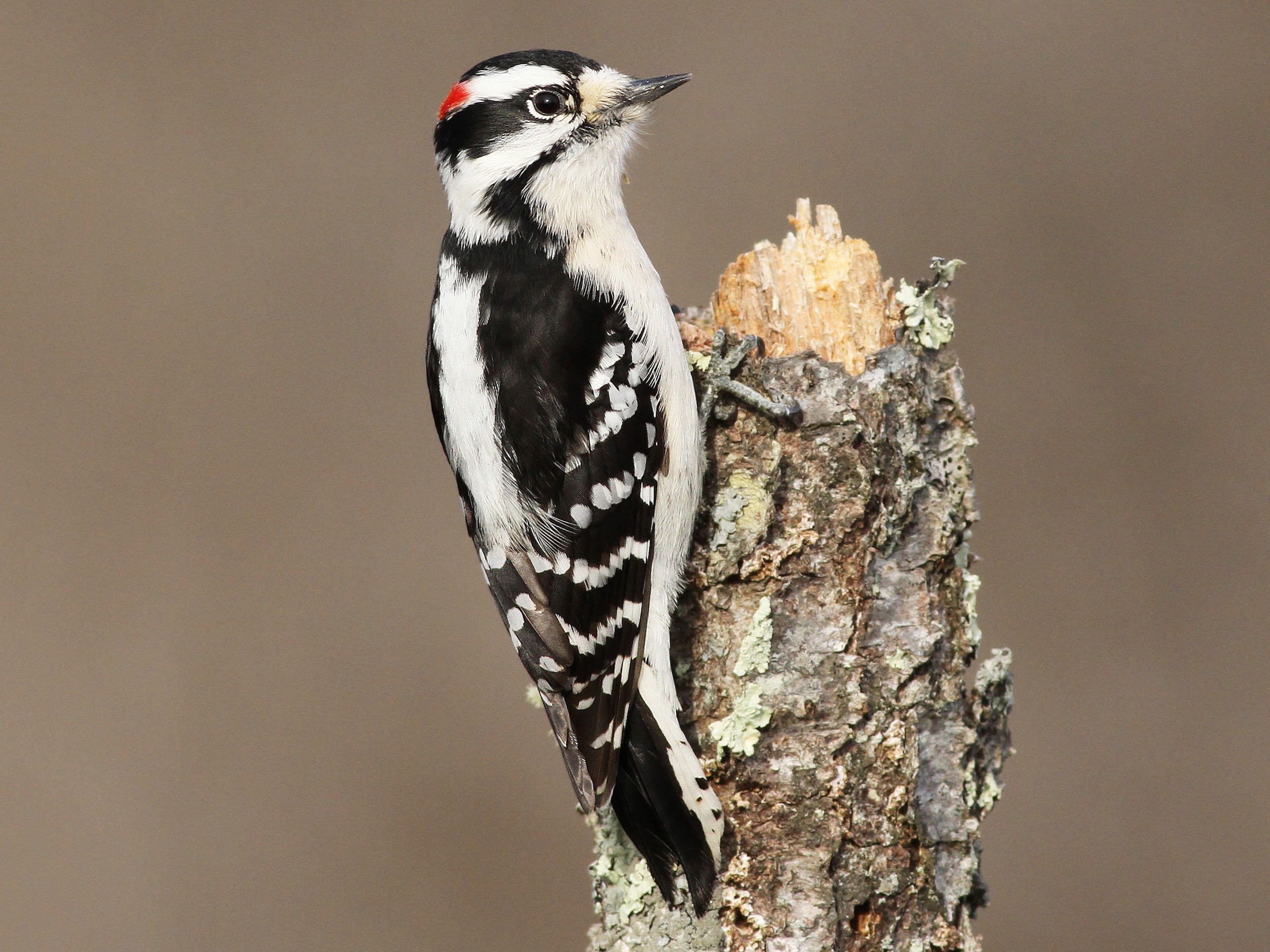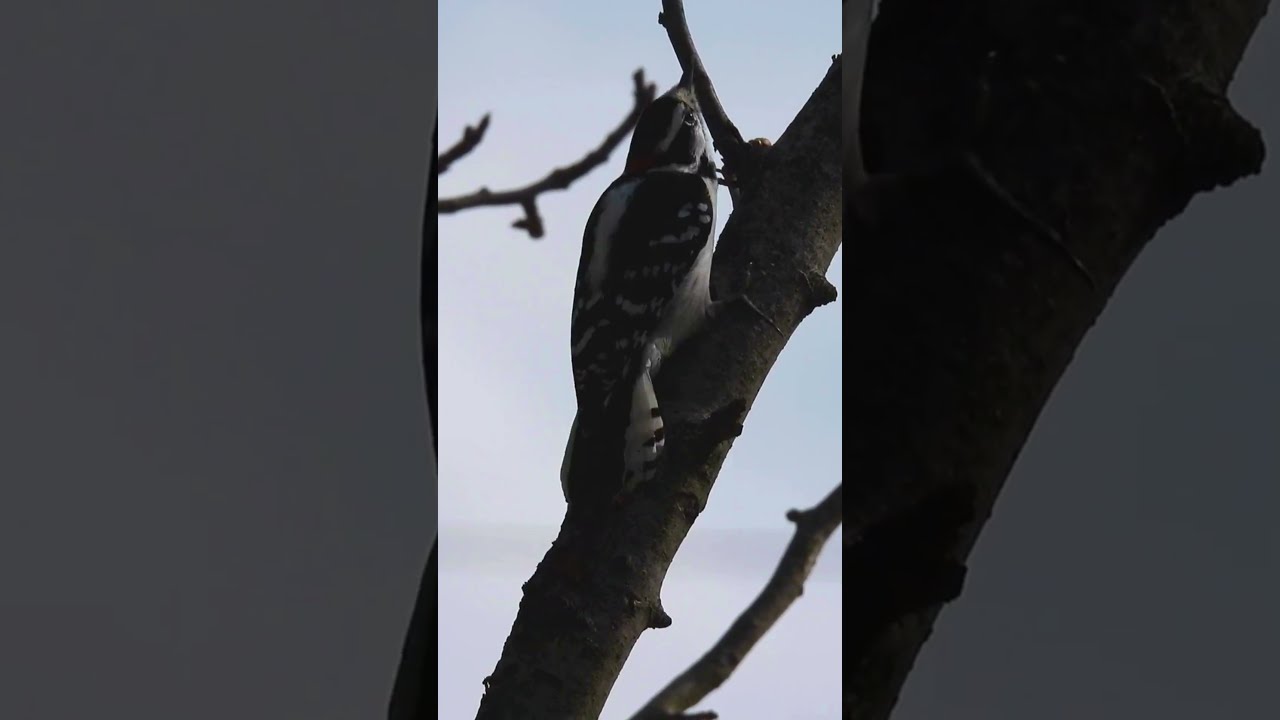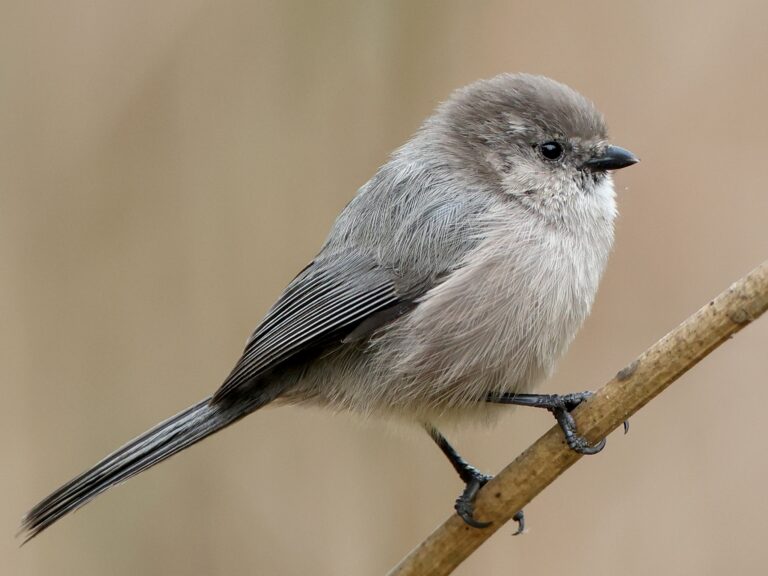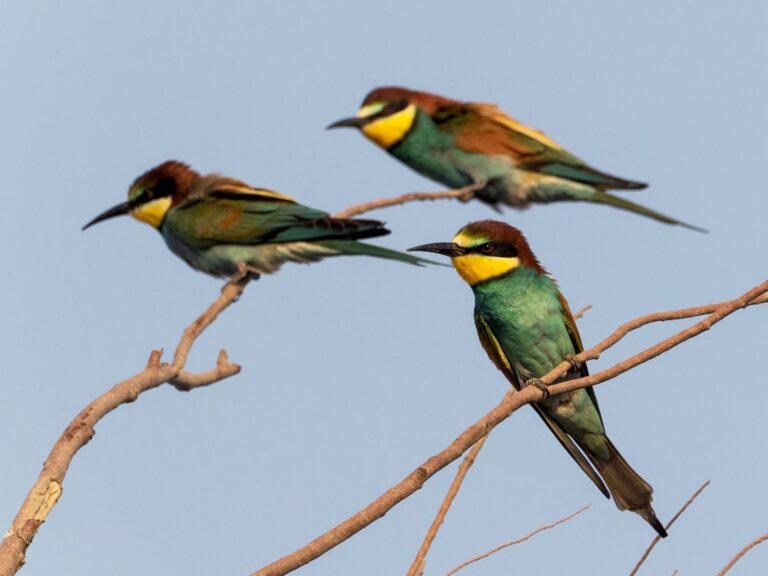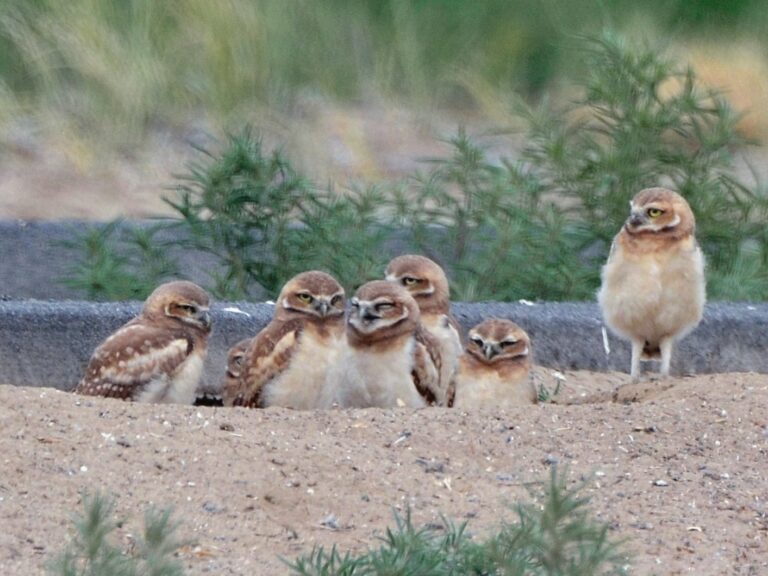Downy Woodpecker: Identification Tips and Fascinating Behaviors
The Downy Woodpecker, Picoides pubescens, is North America’s smallest woodpecker. Spotting one means paying attention to size, markings, and even tiny gender clues.
Physical Characteristics
Downy Woodpeckers are small, measuring about 6 to 7 inches long. Their wingspan ranges from 10 to 12 inches. They have black and white feathers. The back is mostly black, but a broad white stripe runs down the middle.
Wings are marked with white spots, and the underparts are white. The head features black and white stripes, with the eyes and nape set off by these patterns. Their bill looks short and stubby, which helps set them apart from similar woodpeckers. The tail is black, and the white under-tail coverts are dotted with black spots.
Whether flying or perched, their bold black and white pattern is hard to miss. You’ll find them year-round in woodlands, parks, and even backyards.
Male vs. Female Downy Woodpecker
Adult males have a bright red patch on the back of the crown. Females don’t have this red mark—they just show black and white on their heads. Both sexes share the same striped face pattern. Body size and feather color are nearly identical for males and females.
Juveniles might show a little red on the crown, but usually much less than adult males. Behavior like drumming or feeding doesn’t really help with telling them apart, so that red patch is your best clue.
Downy Woodpecker vs. Hairy Woodpecker
People often confuse the Downy Woodpecker with the Hairy Woodpecker. Both sport similar black and white coloring.
Size is the main difference—Downys are smaller, while Hairys can have a wingspan up to 16 inches. The Hairy’s bill is noticeably longer, almost as long as its head, while the Downy’s bill looks small for its face.
The outer tail feathers of the Downy have black spots. On the Hairy, those feathers are all white. If you want a deep dive, here’s a quantitative life history study of Downy and Hairy Woodpeckers.
Habitat and Range
You’ll find Downy Woodpeckers across North America. They show up in all sorts of wooded spots, from forests to city parks and old orchards. They like places with plenty of trees, where they can dig for insects and carve out nesting spots.
Preferred Environments
Downy Woodpeckers thrive in deciduous and mixed woodlands. They’re also comfortable in suburban parks and orchards, as long as there are mature trees and food.
Fallen logs, dead trees, and limbs with peeling bark are especially important for them. These places host insects and offer good nesting sites. They tend to avoid dense, unbroken forests and rarely show up in wide-open fields or deep coniferous woods. Instead, they pick areas with a variety of trees, both old and new.
Urban areas with trees—like backyards and city parks—can attract them if there’s enough food and some dead wood left around. Here’s a quick look at where you’ll likely spot them:
| Environment | Presence |
|---|---|
| Deciduous forests | Common |
| Mixed woodlands | Common |
| Urban parks | Occasional |
| Orchards | Frequent |
| Open grasslands | Rare |
Curious about their habitat needs? Here’s a habitat suitability index.
Geographic Distribution
You’ll find Downy Woodpeckers throughout most of North America. Their range stretches from Alaska and Canada all the way south across the US. They’re missing from the desert Southwest and the far northern tundra, but they adapt well wherever there are trees. Most Downys stick around all year and don’t migrate far.
Sometimes, they’ll move short distances to find food when it gets really cold, but they usually stay close to home. In the eastern US and southern Canada, they’re especially common.
Their knack for living in both rural and developed places makes them one of the most familiar woodpeckers around. For more detailed maps and data, check out this habitat modeling report.
Behavior and Ecology
Downy Woodpeckers are always on the move, foraging, drumming, and calling out to each other. Their behavior shows just how well they’ve adapted to woodland life, from their feeding style to their communication tricks.
Feeding Habits
These woodpeckers mostly eat insects—beetle larvae and ants are favorites. They use their sharp, chisel-like bills to peck into dead wood, branches, and even plant stems.
They check tree cavities for prey and sometimes switch to seeds, berries, or suet in winter when bugs are scarce. Males and females don’t feed in exactly the same places. Males often pick smaller branches, while females go for thicker limbs and tree trunks. This little difference helps them avoid competing with each other for food.
Want to know more? Here’s a closer look at their foraging behavior and energy-maximizing strategies.
Breeding and Nesting
Breeding season kicks off in early spring. Both males and females work together to dig out a nesting cavity, usually in a dead tree or branch. The finished nest is a deep hole lined with wood chips. A typical clutch holds 4-5 white eggs.
Both parents take turns incubating the eggs and feeding the chicks. During breeding season, they get territorial—pairs drum on wood and show off to mark their space or attract a mate.
There’s more detail in these studies of reproductive behavior.
Vocalizations and Communication
Downy Woodpeckers have a pretty wide range of calls and sounds. Their sharp “pik” call and soft whinny help them keep in touch or warn others about danger. Hear it for yourself here.
They also drum—a rapid tapping on wood with their beak. Drumming is important during courtship and when they’re defending their territory.
You’ll sometimes see them bob their heads or spread their wings during close encounters. Males may even hover near nesting spots.
If you want to dig deeper, check out this research on copulatory behavior.
Taxonomy and Naming
The Downy Woodpecker has a surprisingly detailed scientific backstory. Its name and classification tell us a lot about where it fits in the bird world and how scientists have looked at it over time.
Scientific Classification
You’ll see the Downy Woodpecker listed as Dryobates pubescens these days, though older books might call it Picoides pubescens. It’s part of the Picidae family, which covers all woodpeckers.
There’s been some debate about whether it belongs in the genus Picoides or Dryobates, but most people go with Dryobates now. Here’s the basic breakdown:
| Rank | Name |
|---|---|
| Kingdom | Animalia |
| Phylum | Chordata |
| Class | Aves |
| Order | Piciformes |
| Family | Picidae |
| Genus | Dryobates |
| Species | D. pubescens |
Scientists have studied differences among Downy Woodpecker populations, but these are usually pretty minor. If you’re interested in the details, here’s a scientific analysis of populations.
Name Etymology
The name “Downy Woodpecker” comes from its soft, fluffy feathers, which look a bit different from other woodpeckers. The Latin pubescens means “downy” or “covered with soft hairs”—pretty fitting, honestly.
“Woodpecker” is self-explanatory, but the genus name Dryobates is Greek for “tree walker.” That sums up their behavior nicely. For more about the bird’s naming history, take a look at this nomenclature and naming discussion.
Conservation and Cultural Significance
The Downy Woodpecker is a familiar sight across North America. Researchers and birders have kept a close eye on its population, habitat needs, and its role in the environment.
Conservation Status
Right now, the Downy Woodpecker isn’t threatened or endangered. Its population is stable and widespread across the US and Canada.
These birds adapt to all sorts of wooded habitats, from forests to city parks and backyard trees. They need deadwood for nesting and plenty of insects for food, but they’re pretty flexible. Groups like Audubon keep tabs on their habitats, just in case. Cutting down old trees and changing woodlands can make life harder for them, though.
Conservation efforts focus on keeping habitats healthy, especially in cities and protected areas. The United States Fish and Wildlife Service tracks habitat suitability to help keep populations strong.
Role in Ecosystems
Downy Woodpeckers play a useful part in forests. By pecking at bark and branches, they help control insect pests like beetles and ants.
Old nest holes they make often get reused by other birds and small mammals—chickadees, flying squirrels, you name it. These cavities become safe homes for lots of creatures.
Because they’re so common and easy to spot, Downy Woodpeckers get people interested in local wildlife. Bird counts and community science projects often use them as indicators for ecosystem health.
That makes them important for both science and public engagement.
Frequently Asked Questions
What differentiates male and female Downy Woodpeckers in appearance?
Male Downy Woodpeckers have a small red patch on the back of their heads. Females don’t have this red patch and are just black and white.
Both sexes show white spots on their wings and a white stripe down their backs.
What are the primary components of a Downy Woodpecker’s diet?
Downy Woodpeckers eat lots of insects—beetles, ants, and caterpillars are favorites. They also eat seeds, grains, and berries, especially in winter.
Sometimes, they visit backyard feeders for suet and peanuts.
What characteristics define the habitat of Downy Woodpeckers?
Downy Woodpeckers show up a lot in forests, woodlots, and parks. They really like spots with trees and shrubs.
You’ll even find them in suburbs or city parks, as long as there’s enough greenery. They usually nest by drilling cavities into dead trees or old branches.
How does the size of a Downy Woodpecker compare to other woodpeckers?
The Downy Woodpecker is actually the smallest woodpecker in North America. It measures just 6 to 7 inches long.
The Hairy Woodpecker looks similar but is noticeably bigger, growing up to about 9 inches. If you’re curious about more woodpecker facts, check out Why Don’t Woodpeckers Get Headaches?: And Other Bird Questions.
Can you describe the typical call of a Downy Woodpecker?
Downy Woodpeckers usually make a short, sharp “pik” sound. There’s also a kind of whinnying or descending rattle.
In spring, you’ll often hear them drumming on trees. That sound is almost impossible to miss if you’re nearby.
Is it common for Downy Woodpeckers to occupy birdhouses?
Downy Woodpeckers usually carve out their own nest cavities in trees. Still, every now and then, they’ll check out a well-placed birdhouse—especially if they can’t find a good natural spot.
If you’re hoping to attract them, make sure the entrance hole is pretty small. About 1.25 inches works best for their size.
